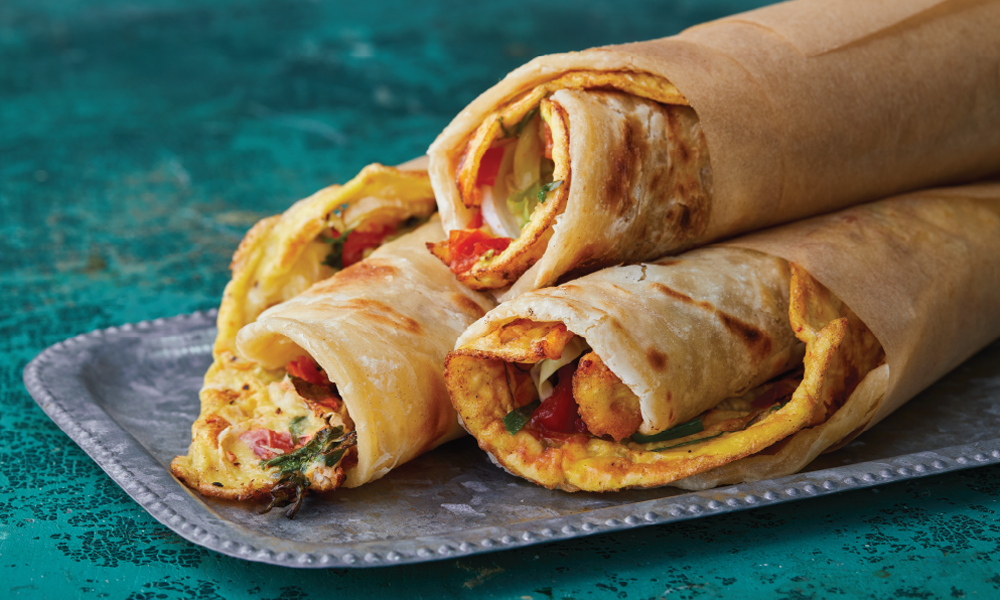
A culinary treat to honor Ugandan martyrs
June 3 is Martyrs Day in Uganda
June 3 is Martyrs Day in Uganda
Uganda is proud of its rich culture and deep traditions. They celebrate their cuisine, they love their land and the faithful there cherish their holy Catholic martyrs.
Uganda is proud of its rich culture and deep traditions. They celebrate their cuisine, they love their land and the faithful there cherish their holy Catholic martyrs.
If you have ever visited Uganda, you surely encountered street vendors offering you a “Rolex.” This one isn’t the shiny wristwatch with a price tag of $10,000. Rather, it’s a tasty food item selling for as little as 50 cents apiece! The locals don’t just sell you food; they smile with gleeful anticipation when they discover you are trying something for the first time. The etymology of the word “rolex” comes from rolled eggs – essentially, an omelet with cabbage, tomato and onion rolled inside of a chapati, or unleavened flatbread. The chapati was brought to East Africa from West India, and the ensuing Ugandan adaptation was born, originally in the town of Busoga. Since it was an affordable food option, it became popular among university students in Kampala, and from there spread to become a huge part of the food culture throughout Uganda. It has become such a staple that there is now a national ‘Rolex Festival’ held annually.
But the Ugandans are not just enthusiastic about their cuisine. Something even bigger takes place every year in Uganda on June 3 in Namugongo. There, millions gather annually to celebrate the feast of the Uganda Martyrs, who shed their blood for living the Christian faith during the late 19th century. It is part of a sacred pilgrimage, to a sacred spot, that honors sacred lives. Strike up a conversation with a Ugandan Christian about their holy martyrs, and you will encounter the same look of pride one might capture when they are handed a Rolex.
The Shrine in Namugongo is the site where St. Charles Lwanga and 12 companions were burned alive by the order of King Mwanga for not renouncing their faith and giving into his immoral demands. A total of 22 Catholics and 23 Anglicans were martyred. Christianity was relatively new to this part of the world at the time, and the king’s efforts to stifle and eliminate the small but growing Christian movement was brutal. But history would prove that his efforts backfired, as Catholicism is now the largest denomination in Uganda and the people of this land hold great reverence and pride for these young men who lost their lives for Christ.
In 1964 they were canonized by Pope Paul VI. Clearly, the witness of those 22 teenagers who died for the faith is still bearing fruit today. Ugandans are as proud to teach you about their holy martyrs as they are to hand you a Rolex. And both are worthy of their pride.
Michellle Sessions DiFranco is a designer and the busy mom of three children.
¡Lee este artículo en español! (Spanish Language Version)
Ugandan Rolex
- 2 cooked chapati (bought or homemade - African chapati recipes can be found online)
- 4 eggs
- 2 tablespoons vegetable oil
- ½ cup finely chopped cabbage
- 1 small red onion (finely chopped)
- 1 Roma tomato (seeded and finely diced)
- Small bunch fresh cilantro (chopped)
- Salt and pepper to taste
Heat a tablespoon of oil in a medium-sized skillet on medium heat. In a mixing bowl, season and beat the eggs with salt and pepper. Pour half of the mixture in the pan and quickly sprinkle half of the cabbage, tomatoes, onion and cilantro evenly over the top. Cook until just set. Gently flip and cook other side until just set. Place the chapati directly over the top so it continues to steam the veggies underneath (for about a minute). With a spatula, carefully lift onto a plate (chapati side down) and roll it up. Repeat this process with the remaining ingredients for a second Rolex. Serve with chutney or a favorite dipping sauce.



